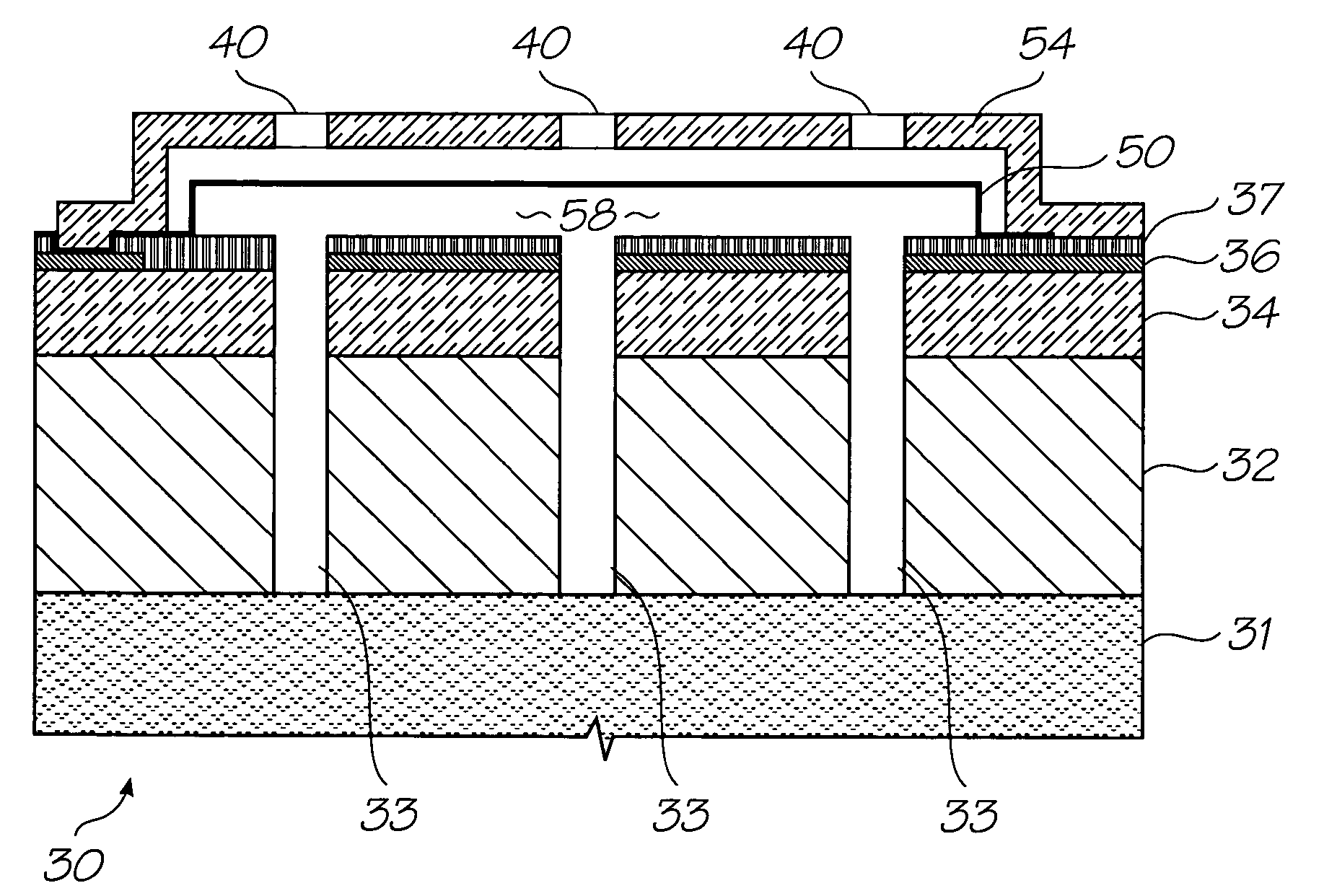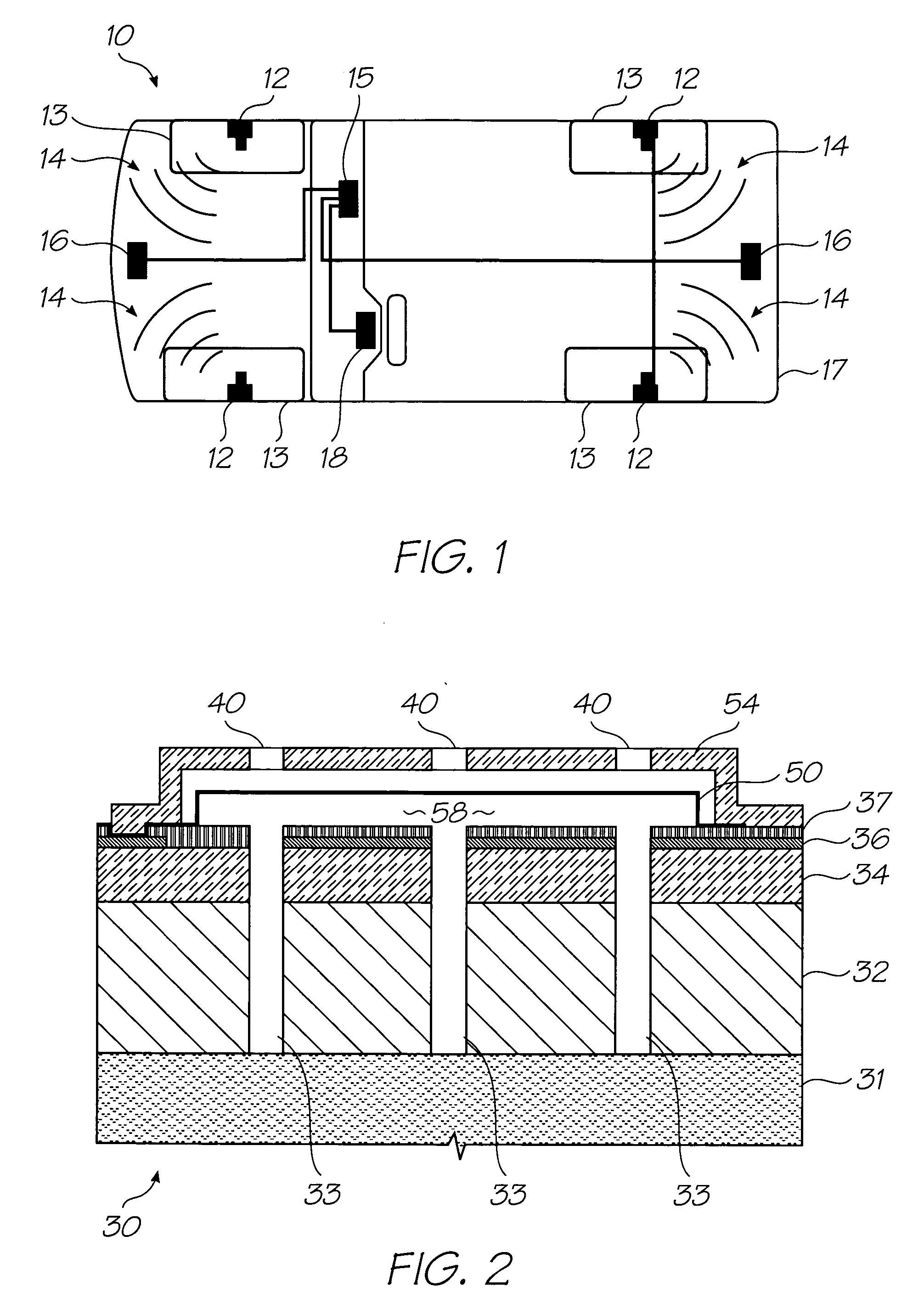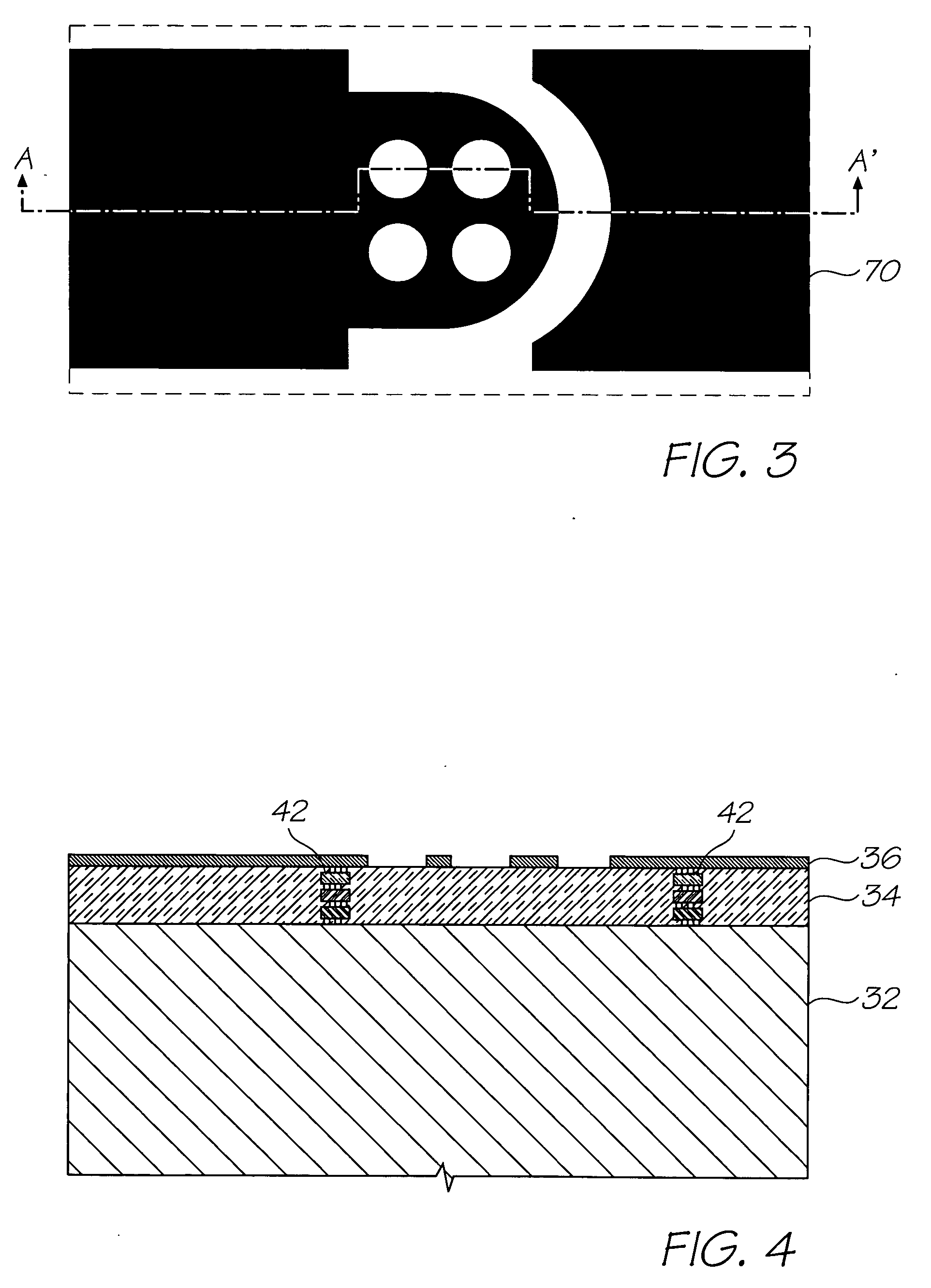Wafer bonded pressure sensor
a pressure sensor and wafer technology, applied in the field of pressure sensors, can solve the problems of sensor calibration drift, sensor damage, reference cavity pressure equilibration with tire pressure, etc., and achieve the effects of low melting point material, high voltage, and avoiding high surface cleanliness
- Summary
- Abstract
- Description
- Claims
- Application Information
AI Technical Summary
Benefits of technology
Problems solved by technology
Method used
Image
Examples
Embodiment Construction
[0113] The following embodiments are described in order to provide a more precise understanding of the subject matter of the present invention. While the embodiments focus on a capacitative type sensor, ordinary workers in this field will readily understand that the invention is equally applicable to other forms of pressure sensor such as: [0114] (i) Piezo-resistive, where the membrane is formed from a non-conductive material and the piezo material is in contact with the membrane. Deflections of the membrane give rise to piezo-induced changes in resistivity (and hence current, if a voltage is applied) that can be monitored electronically. [0115] (ii) Resonant pressure sensors, where the frequency of oscillation of the membrane depends on the pressure difference. The initial resonance could be activated by using a time-varying electrostatic force between the two electrodes. [0116] (iii) Force compensation pressure sensors, where an electrostatic force is applied to maintain the membr...
PUM
| Property | Measurement | Unit |
|---|---|---|
| temperature | aaaaa | aaaaa |
| thick | aaaaa | aaaaa |
| diameter | aaaaa | aaaaa |
Abstract
Description
Claims
Application Information
 Login to View More
Login to View More - R&D
- Intellectual Property
- Life Sciences
- Materials
- Tech Scout
- Unparalleled Data Quality
- Higher Quality Content
- 60% Fewer Hallucinations
Browse by: Latest US Patents, China's latest patents, Technical Efficacy Thesaurus, Application Domain, Technology Topic, Popular Technical Reports.
© 2025 PatSnap. All rights reserved.Legal|Privacy policy|Modern Slavery Act Transparency Statement|Sitemap|About US| Contact US: help@patsnap.com



